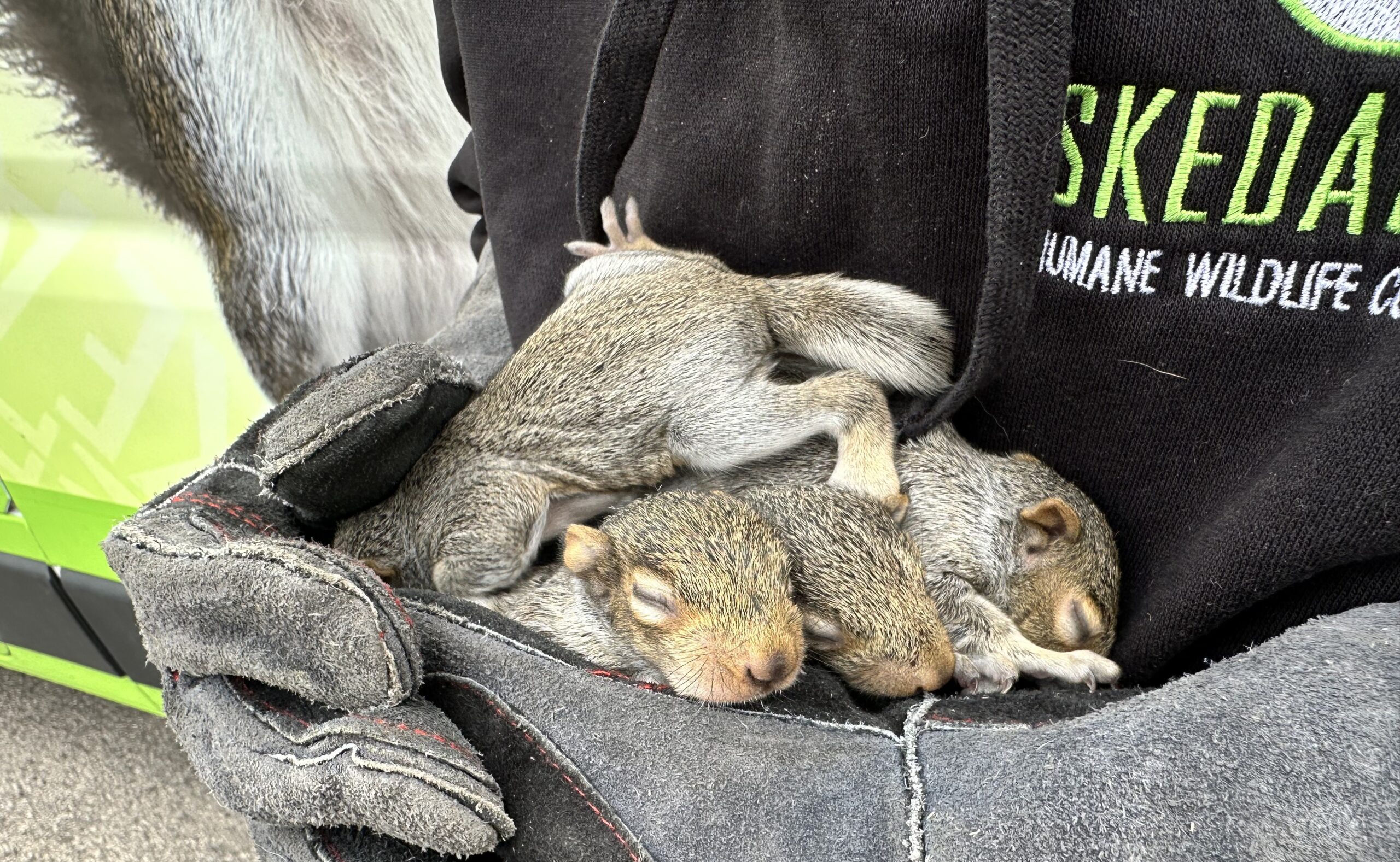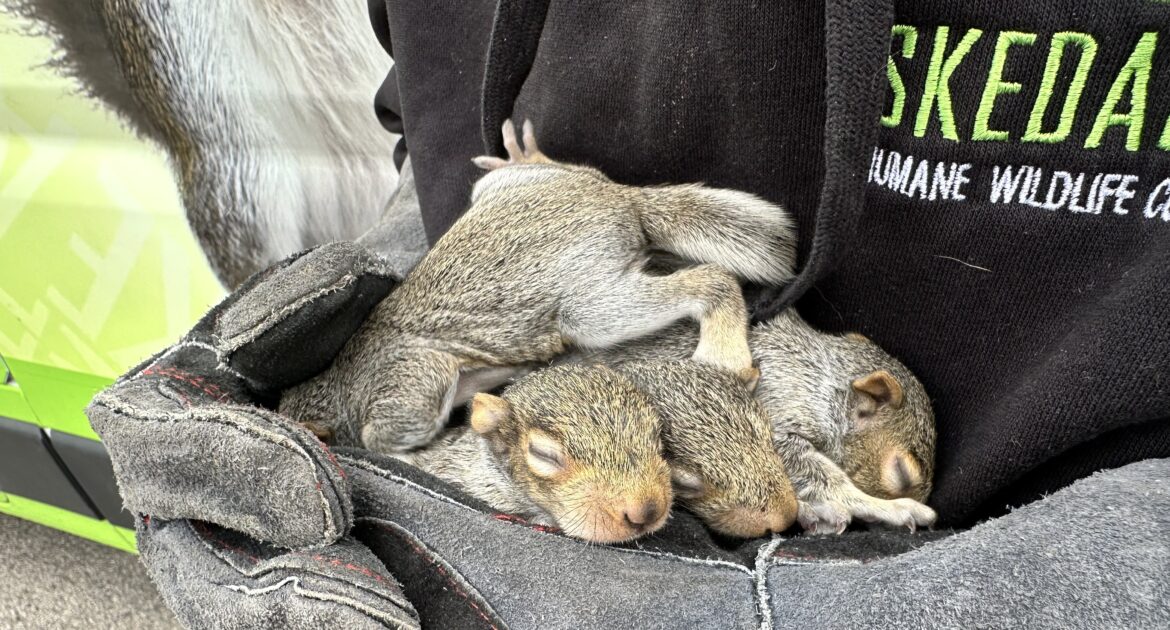Squirrels and rodents are common in Milwaukee neighborhoods, darting between backyards, parks, and tree-lined streets. But what happens when they move from their natural habitats and into our homes? This is a question many homeowners ask, especially when dealing with signs of unwanted guests in their properties. A common concern is whether squirrels and rodents live together and what this could mean for your home.
Understanding how squirrels and rodents coexist can help you identify potential risks, address existing issues, and take preventive steps before any damage occurs.
Do Squirrels and Rodents Live Together
Squirrels and rodents may coexist in various environments, but they aren’t naturally cooperative. Each species has distinct behaviors and traits that make harmony unlikely, and their interactions are often competitive.
- Squirrels and rodents may share spaces like attics or garages, but establish separate zones.
- Squirrels are diurnal (active during the day).
- Most rodents, like rats and mice, are nocturnal (active at night).
- This difference in activity reduces direct encounters.
- Competition for food and shelter still exists.
For example, in neighborhoods like Shorewood or Bay View, squirrels and rodents might share the same backyard but rarely interact actively. A squirrel may occupy higher areas like trees or rafters, while rodents, like rats, tend to stick closer to the ground for safety. However, if resources like food or nesting sites become scarce, these animals may cross paths, sometimes leading to conflicts.
Recognizing these interactions is essential for homeowners. If you hear scurrying in your attic during the day, it’s likely a squirrel. Noises at night? That’s most likely a rodent. Differentiating between these signs can help you better understand and address the issue at hand.
Squirrels and Rodents in Homes
When squirrels and rodents enter homes, they can cause significant structural damage and pose health risks to your household. Both species are notorious for their gnawing habits, which can wreak havoc on the interior of a house.
- Chewed Wiring and Insulation: Squirrels and rodents need to gnaw constantly to keep their teeth sharp and manageable. They frequently target electrical wiring, which can increase the risk of fires. Insulation is another popular material, as it’s shredded and used for nests.
- Droppings and Urine: Unlike a contained pet, rodents and squirrels leave droppings and urine throughout their occupied space, which can lead to foul odors and potential health hazards. Diseases like leptospirosis and hantavirus are particularly concerning with rodent infestations.
- Structural Damage: Whether it’s a squirrel enlarging entry points around soffits or a rat burrowing into the foundation, both animals compromise the structural integrity of homes over time.
Residents of Milwaukee homes with older structures, like the charming houses in the Historic Third Ward, should stay especially vigilant. Aging materials and historical designs often come with gaps or weak points that invite squirrels and rodents indoors.
How to Detect Squirrel and Rodent Activity in Your Home
Pay attention to these telltale signs of intrusion in your home:
- Noises: Squirrels are loud during the day and often make scratching or scampering sounds as they run in and out. Rodents are active at night and produce softer squeaking or gnawing noises.
- Droppings: Rodents leave small, dark droppings resembling rice grains, while squirrel droppings are slightly larger and oval-shaped.
- Nest Materials: Squirrels create nests from leaves, twigs, and insulation, which may be visible in attics or near windows. Rodents, on the other hand, prefer shredded paper or fabric.
- Gnaw Marks: Check for bite marks on wood, wiring, or stored goods. Rodents often chew through containers to access food.
Identifying these signs early can save you from prolonged infestations and costly repairs.
Coexisting with Squirrels and Rodents
Preventing wildlife from turning your house into their home starts with understanding their needs. Here are steps you can take to discourage squirrels and rodents from cohabiting with you:
- Secure Entry Points
Examine your home’s exterior for openings where animals might enter, such as gaps in the roofline, soffits, or vents. Squirrels only need a two-inch hole to squeeze through, while rodents can fit through a dime-sized gap. Seal these areas with durable materials like heavy-duty steel mesh to prevent access.
- Manage Food Sources
Both squirrels and rodents are attracted to food. Keep outdoor trash cans tightly secured, and clean up fallen fruits or seeds from your yard. If you feed birds, use baffles to prevent squirrels and rodents from raiding feeders.
- Reduce Clutter and Nesting Options
Declutter your yard and interior spaces to eliminate hiding and nesting opportunities. Cut back tree branches that overhang your roof, creating pathways for squirrels. Indoors, store paper, fabric, and food in sealed containers.
- Monitor and Maintain Your Home
Regularly inspect your attic, basement, and crawl spaces. Look for signs of droppings, chewed materials, or unusual odors. Prompt identification and action can stop a minor issue from escalating into a full-blown infestation.
- Consider Professional Help
If squirrels or rodents have already made their way inside, contact a professional wildlife service like Skedaddle to implement safe and humane removal methods.
When to Call for Professional Rodent Removal
Knowing when to call for professional rodent removal can prevent small issues from becoming major problems. If you notice persistent scratching sounds in your walls or ceiling, it’s likely a sign of rodents nesting in your home. Visible droppings, gnaw marks on wood or wires, and damaged insulation are also clear indicators of a rodent infestation.
Additionally, strange or foul odors may point to the presence of rodents or their nests. Acting promptly is critical, as rodents can cause significant structural damage and even pose health risks to your family due to the diseases they carry. When DIY methods fail or when the infestation seems extensive, it is time to contact professional services.
Skilled providers like Skedaddle have the expertise, tools, and humane strategies needed to safely and effectively address the problem, while also ensuring that entry points are sealed to prevent future invasions.
Milwaukee’s Wildlife and Your Home
Living in areas with abundant wildlife, like the parks near Lake Michigan or neighborhoods around the Milwaukee River Greenway, means coexisting with squirrels and rodents is a reality. While these animals can live comfortably outdoors, shared spaces with humans can quickly lead to tension.
Keeping your home secure with regular inspections and preventive measures will limit the chances of unwanted visitors. Remember, if squirrels and rodents are already inside, acting swiftly can protect your family and prevent further damage to your home.
Take Action to Protect Your Home Today
Do you suspect squirrels or rodents are sharing your living space? Don’t wait for the damage to become irreparable. Give us a call at Skedaddle, and our team will provide expert advice and solutions tailored specifically to your home. Together, we’ll ensure your house remains a safe, wildlife-free space.




